If you’re looking to push your guitar to the limit to make your solos soar and get crunchy power chords, you’ve come to the right place! In this pedal vs amp distortion and overdrive article, I’ll reveal the best way to get the sounds you’ve been craving!
You can use the table of contents below to take you to the area that interests you. Click on the little box to open it, and then click on the section of the article you want to read, or you can read from start to finish if you want the full distortion and overdrive experience!
The Short Answer
Getting distortion and overdrive from pedals versus the guitar amplifier is largely a personal preference because each method will color your sound differently. The amplifier can give you a warmer and more organic sound, while pedals can give you a colder and more artificial sound. You can combine the overdrive or distortion from an amplifier with pedals to give you the best of both worlds. Pedals can make a low-quality amplifier sound better.
Keep On Reading (Below) To Learn More
Pedal Versus Amplifier Comparison Chart

Here is how “dirt” effects pedals compare to guitar amplifiers for overdrive, distortion, and other characteristics.
“Dirt” can come from an overdrive pedal, a distortion pedal, or a guitar amplifier.
To learn more about each one, click on the headings in the table below. The answers are typical.
| Comparison | “Dirt” Effects Pedal | Amplifier |
|---|---|---|
| Overdrive Quality | Less organic | More organic |
| Distortion Effectiveness | More effective | Less effective |
| Tone | Easier to dial In | Generally limited |
| Sustain | Typically more | Typically less |
| Functionality | Better | Worse |
| Versatility | More | Less |
| Volume Level Required | Can be a low volume | Higher (low with Master Volume) |
| Foot-Switchable | Yes | Only with multi-channel amps |
| Cost | Less expensive | More expensive |
Keep On Reading (Below) To Learn More About Each Topic
What Are Overdrive And Distortion?
Overdrive and distortion (dirt) are not the same as just making a guitar sound loud. You can have a clean guitar tone that sounds the same soft and loud, with each note very crisp and easy to distinguish from the others.
You can overdrive or distort a guitar’s signal using an effects pedal, an amplifier, or both.
Overdrive
Overdrive pushes a guitar’s output to the point where the audio signal begins to saturate or “clip.” This gives the notes a bit of a rough or edgy sound. Overdrive can be barely noticeable or give you a sound that begins to noticeably break up a little with sustain.
Overdrive is perfect for playing chords in a Rock or Blues format when you want to give them a bit of an aggressive-sounding flavor. It will give your solos just enough dirt and sustain to make them flow, with notes that seem to pop off the end of your guitar pick!
Think Eric Clapton or Buddy Guy.
Distortion
You can think of distortion as the next step after overdrive, sort of like overdrive on steroids! It’s not always clear where overdrive ends and distortion begins.
Distortion is a favorite among Metal guitar players because it makes everything kind of run together in a musical way with a darker and meaner-sounding profile. Enough distortion can make power chords sound epic and give your solos notes that sustain forever.
Think bands like Black Sabbath, Metallica, and Megadeath.
Distortion Versus Fuzz
A fuzz pedal gives you distortion taken to the next level. It is a more saturated “fuzzed-out” sound that can really “clip” the audio signal.
My first fuzz pedal was a Gibson Maestro Fuzz-Tone. Keith Richards of the Rolling Stones (for those that may not know) used this pedal to record the opening riff to the song “I Can’t Get No Satisfaction.”
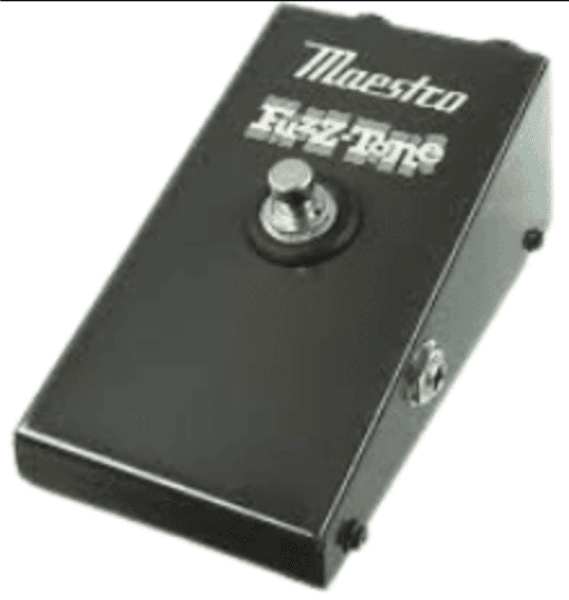
Jimi Hendrix was famous for using an Arbiter Fuzz Face pedal to get many of his signature sounds, like Voodoo Child (Slight Return and parts of the full version).
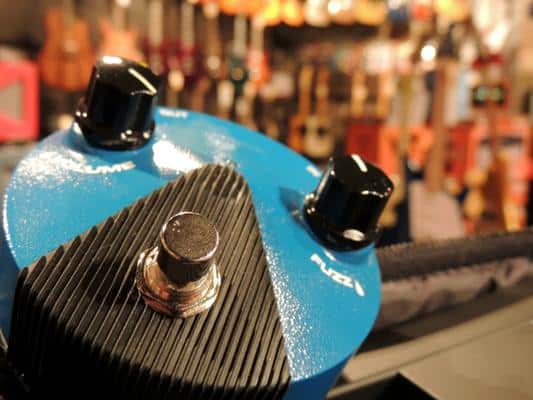
If you don’t play Rock or Metal, you may find the distortion of a fuzz pedal to be a little “over-the-top,” but check it out and see what you think. You never know.
Effect Pedals – The Good And The Bad
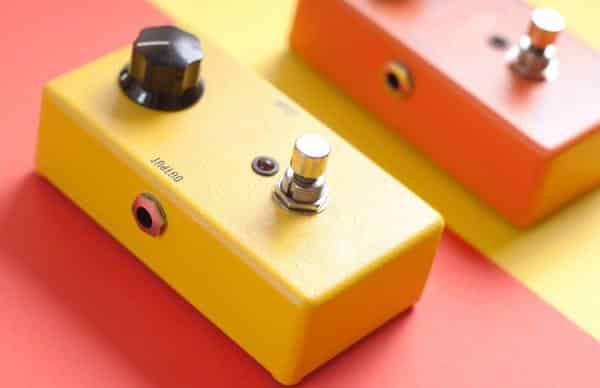
Effects pedals are a great way to get overdrive and distortion out of your guitar amp. I have more distortion pedals than any other type in my collection. I bought every pedal I saw when I first started to play guitar. I thought they would help me sound better, and they did to a certain extent. Still, to be an awesome player, you have to keep adding that magic ingredient, practice!
Overdrive and distortion pedals should always be inserted in the signal chain between the guitar and amplifier, never in the effects loop!
Overall Sound
Overdrive and distortion pedals are generally more effective than what you would get from an amplifier, especially if it doesn’t have a master volume control.
Most overdrive pedals can be less organic-sounding than a good amplifier, especially if it has an all-tube design.
On the other hand, it’s easier to get more distortion out of a pedal than the majority of amps.
Tone
Overdrive and distortion pedals are easier to dial in just the right tone you are looking for than trying to do it with the limited controls on an amp.
Sustain
Most overdrive and distortion pedals can give you more sustain than the amp you’re probably using. The holy grail for clean-sounding sustain is a compressor pedal, which does not add dirt to your signal.
Functionality And Versatility
Pedals really excel in the functionality and versatility department! Overdrive and distortion pedals have controls like Level, Tone, Low, Mid, Treble, Drive, Distortion, and Sustain, allowing you to shape the sound to exactly what you’re looking for.
They are also very easy to turn on and off, hands-free, leaving you to play your guitar uninterrupted.
Volume Level
Overdrive and distortion pedals can work their magic with a low volume without blowing the windows out of the house!
Cost
These pedals cost much less than a high-quality amplifier that can give you great-sounding overdrive and distortion.
What I Like In Pedals
Here are some of my favorite overdrive and distortion pedals. I’ve used them for years and always go back to them for their classic sounds. They work great with solid-state and tube amps with and without a master volume setting.
Ibanez TS-9 Tube Screamer
The Ibanez TS-9 Tube Screamer is one of the first overdrive pedals I ever used. It has such a classic rock sound and can drive the front end of any amp to give you that Stevie Ray Vaughan-type vibe!
This is a reissue of the classic version. It has the same components that were used to make the original model! Unfortunately, my original pedal was stolen, and it’s worth a fortune to whoever has it.
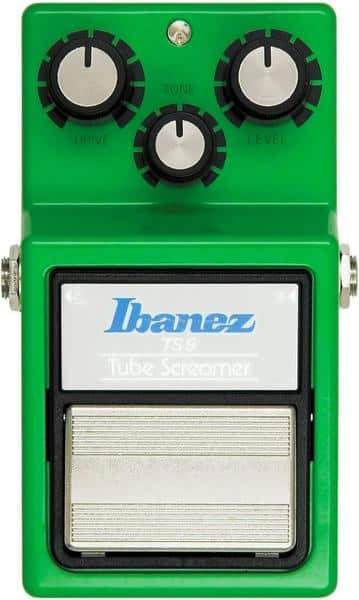
Click HERE To Check Reviews & Price On Amazon
Boss SD-1 Super Overdrive
This is my other go-to overdrive pedal. It’s based on the asymmetrical clipping circuit from the OD-1 Overdrive. The pedal gives all my amps a rich, creamy sustain. It’s essentially the opposite of what you get from a Tube Screamer. I love the sound of it through my 50’s Fender Bassman reissue amp!
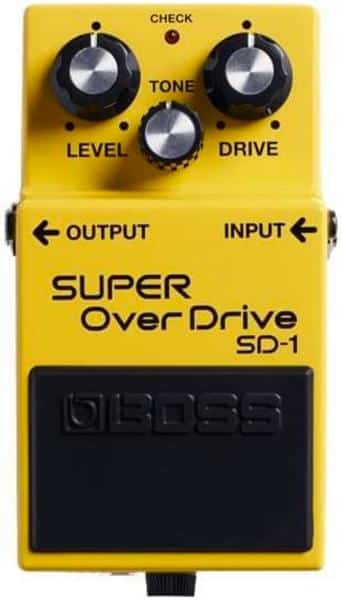
Click HERE To Check Reviews & Price On Amazon
Boss DS-1 Distortion
The DS-1 is your basic “meat and potatoes” distortion pedal. What I really like about it is that the DS-1 lets the tone of your guitar and amp come through! It’s still a top seller.
Try pushing it with the Super Overdrive (Boss SD-1 –> Boss DS-1) for a very versatile sound that can go from Blues to Metal with great harmonics!
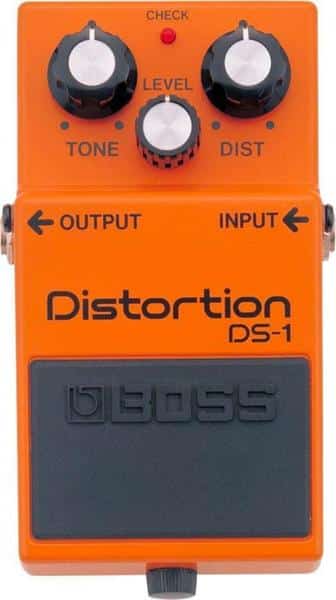
Click HERE To Check Reviews & Price On Amazon
Pro Co RAT2
I love my RAT2 distortion box. This pedal can get a little nasty when you crank the distortion knob to the max! It can conjure those “big hair and spandex” 80’s metal sounds when used to drive a master volume amp.
Try driving it with an Ibanez Tube Screamer (Tube Screamer –> RAT2), and you will be in Metal heaven!
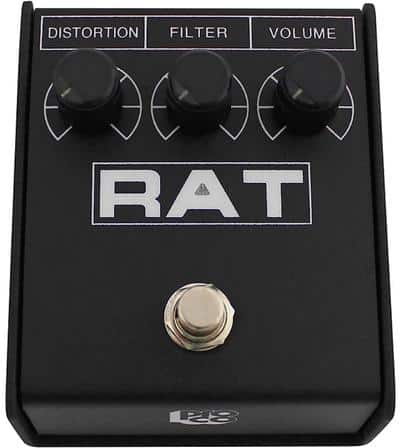
Click HERE To Check Reviews & Price On Amazon
Can You Use More Than One Pedal Together?
Yes, you can use more than one dirt peal together. It is commonly referred to as “gain stacking.”
Depending on the guitar and the type of pedals you use together, you can get any sound, from mild to totally out of control.
Gain Stacking With Pedals
Overdrive Pedal1 –> Overdrive Pedal2 –> Amp
Overdrive Pedal –> Distortion Pedal –> Amp
Distortion Pedal –> Overdrive Pedal –> Amp
Distortion Pedal1 –> Distortion Pedal2 –> Amp
Combining Overdrive And Distortion Pedals
If you are gain stacking two pedals in any of the combinations above, the first pedal increases the gain (clipping) in the second pedal to make the overall sound dirtier. In contrast, the second pedal defines the overall tone of the signal going into the amp.
The more overdrive and distortion pedals you use at once, the nosier the signal will be. At some point, you may need a noise gate pedal in the signal chain to help keep things quiet and give clarity to the notes you play, especially if you are using a high-gain amp.
Supposedly, Billy Gibbons has gain-stacked as many as six Bixonic Expandora EXP-2000R pedals together to get his fabulous heavy distorted tones. You can’t argue with the sound he gets in ZZ Top!
Tube Vs. Solid State Amplifiers
Before we get into amplifiers, I want to say a few words about the difference between tube and solid-state design for those that do not know.
Tube Amps
Initially, all amplifiers were made using tubes. When solid-state technology became available, tube amplification became obsolete, except for guitar amps and high-end home stereo systems.
Musicians like tube amps because they are very organic-sounding and dynamic. The first tube amplifiers broke up to give an overdriven sound when the volume was maxed out but did not produce high-quality distortion.
Tube amplifier design began incorporating a Master Volume control, allowing players to get overdriven sounds at lower volumes. Two-channel amps offered one for clean sounds and the other for overdrive and distortion.
Solid State Amps
The first solid-state guitar amplifiers weren’t very good. They were “cold” and not organic sounding. The good news was that they were typically cheaper to buy. These days, there are a number of solid-state amps that sound great and run the gamut from pretty cheap to very expensive.
Still, they sound different from tube amps when naturally overdriven or distorted. Some players prefer the sound of solid-state amps, especially in the Metal genre.
“Hybrid” (valve-state) amplifiers with a tube pre-amp section and a solid-state amp component are meant to give you the best of both worlds while reducing the cost compared to all-tube amps.
How About Modeling Amps?
Modeling amplifiers use sophisticated processing chips to mimic the sound and playability of sought-after tube and solid-state amps while being more flexible in terms of adding overdrive or distortion.
The cost of high-quality modeling amps can often be prohibitive.
Getting Dirt Out Of A Guitar Amplifier
There are two ways to get overdrive or distortion out of a guitar amp without using a pedal.
Crank Up The Volume
The first guitar amps had just a single volume control. To get a dirty sound out of the amp, you had to turn the volume up until the amp’s tubes began to saturate and clip the audio signal.
These amps were never designed to sound dirty, but players realized that the overdriven sound gave their chords an aggressive crunch and made their solos sing with sustain.
With single-volume amplifiers, you have to live with the sound level required to give you your tone. These amplifiers give you a particular sound and playability because both the preamp and amp stages are at or close to full throttle.
This has made low-wattage amps a popular option, which allows you to dime the volume without blowing the roof off the house.
Crank Down The Master Volume
Eventually, builders began designing amplifiers with a volume control to adjust the preamp section and a master volume control for the power amp section.
This allowed players to turn up the volume control and turn down the master volume to get an overdriven or distorted sound at lower speaker volumes.
If the amplifier’s volume and master volume control are cranked up, the amp gets louder, dirtier, and more dynamic.
By adjusting the volume and master controls, you can get a wide variety of clean and dirty tones at various volume levels. Here is an easy way to visualize it, which is a bit of an oversimplification:
Adjusting The Volume & Master Volume Controls
Lower Volume and Higher Master Volume –> Higher Volume And Cleaner Sound
Higher Volume and Lower Master Volume –> Lower Volume And Dirtier Sound
Volume and Master Volume Equal –> Variable Mix Of Cleaner To Dirtier Sound
Eventually, two-channel and three-channel amps with channel switching became available, which allowed one channel to be set clean and the others to be set dirtier.
Guitar Amplifiers – Pros Vs. Cons

Before effects pedals became commonly used, guitar players relied on their amplifiers to give them the dirt and sustain they needed by cranking up the gain and using humbucker pickups for a hotter input signal.
Some guitar amplifiers can create overdrive and distortion that meets or exceeds what you can get from effects pedals.
Overall Sound
The amount and quality of overdrive and distortion are very dependent on the amplifier’s design characteristics. I had an old 1950s movie projector with a tube amplifier. The humbucking pickups of my Gibson SG guitar really pushed it into overdrive with a warm creamy sound and great sustain!
Guitar amplifiers specifically designed to create overdrive and distortion can sound great with or without effects pedals.
Tone
I prefer the natural overdrive and distortion of a tube amp. The problem is that many amplifiers can only give you a limited amount of distortion. If you are a Metal or Rock player, you’ll probably need to push the front of your amp with a pedal.
Sustain
Sustain is very dependent on the guitar, amp, and volume level you play at. Typically, the more overdrive or distortion an amp produces, the more the notes sustain. I find that my lower-wattage amps give better sustain at reasonable volumes.
If you’re looking for “sustain forever,” you’ll either need something like a wall of Marshall stacks or an effects pedal.
Functionality And Versatility
Most amps don’t give you the control of overdrive and distortion that effects pedals do. You are confined to adjusting volume and tone control settings to get your sound.
Multi-channel amps can give you foot-switchable settings for clean, crunch, and distortion. If you have a single-channel amp, you will have to depend on your guitar’s volume control or make amp adjustments on-the-fly during or in between songs.
Volume Level
Getting the overdrive and distortion you want from a non-Master Volume control amp can be challenging. You might have to crank the volume to ten and fiddle with the tone controls, but depending on your amp’s power rating, you could end up with a very noisy and window-shattering sound!
Guitar amps with a Master Volume control and multichannel amps can let you dial in your tone at much more player and listener-friendly sound levels.
Cost
The cost of even a low-end guitar amplifier that will give you the overdrive and distortion you need will probably exceed the price of an effects pedal.
Tube amps that give great overdrive, distortion, and sustain can easily be in the thousands of dollars!
Amps That Rock At A Very Reasonable Price
I use a wide variety of guitar amplifiers to get my sound. I definitely prefer tube amps because they have that warm and creamy sound, clean and overdriven. I would have to say that Fender and Marshall are my favorites and allow me to cover any musical genre with ease!
I also have a few solid-state amps and modeling amps. I like them, but I don’t use them as often.
You can easily pay thousands of dollars for a good tube amp! Here are two amps you might consider that won’t break the bank.
Fender Frontman 20G
The Frontman 20G is an excellent buy if you’re looking for a three-knob EQ dual-channel amp with a switchable clean and drive channel. You won’t believe how much sound this 20-Watt amp puts out into the 8” Fender Special Design speaker. It’s a great choice for beginners!
You can get it as a combo pack at Amazon, which includes a guitar cable and a variety of Fender picks!
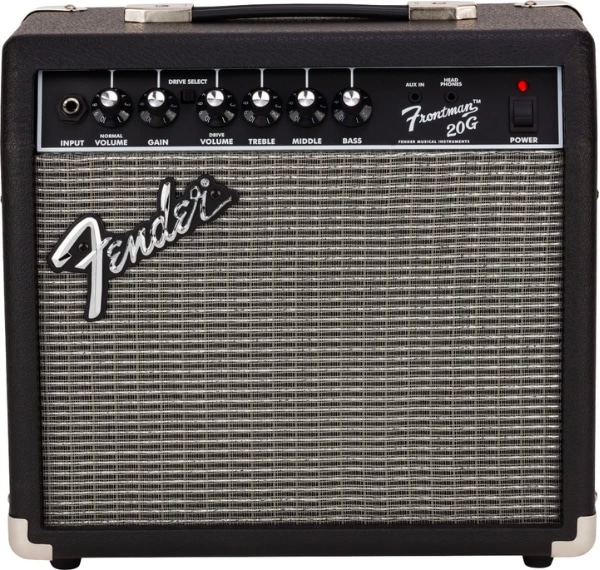
Click HERE To Check Reviews & Price On Amazon
Fender Mustang LT25
If you’re looking for a low-cost modeling amp, you should check out the Mustang LT25. It might surprise you how great this 25-watt modeling amp sounds. The LT25 has a super-simple user interface with a 1.8″ color display and a collection of 30 amps and effects presets!
The 8-inch Fender Special Design speaker is housed in a wooden cabinet.
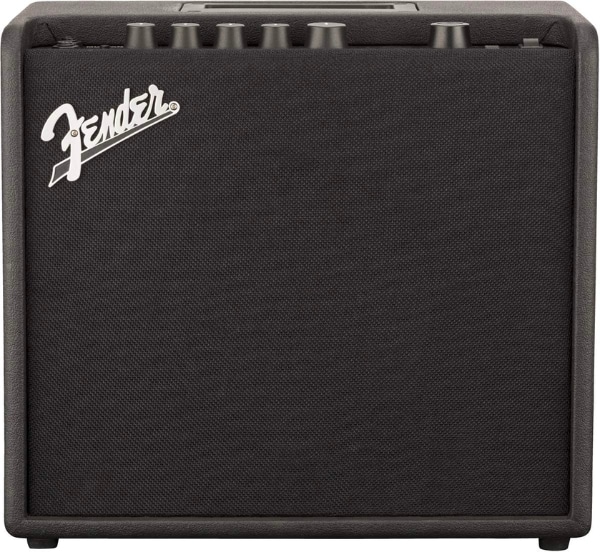
Click HERE To Check Reviews & Price On Amazon
Can You Combine Pedals With Amp Gain?
Yes, it’s very common to push an amplifier’s gain section hard and then use an overdrive or distortion pedal to spike the front end (between your guitar and amp).
For example, if you set your amp to give your rhythm playing a nice-sounding crunch tone, you can kick in a distortion pedal when it’s time to solo.
If you can’t get the proper overdriven or distorted sound out of your amp, gain-stacking by adding a pedal can solve the problem.
Gain Stacking With Pedals And Amps
Dirt Pedal –> Non-Master Volume Amp
Dirt Pedal –> Master Volume Amp
Using a dirt pedal in front of a non-Master Volume amp can give you a really dynamic overdrive or distortion, while using one to drive Master Volume amps can put you in high-gain Metal land!
Frequently Asked Questions

Here are some of the questions I get asked about overdrive and distortion.
If your question does not appear here, please put it in the comments, and I will get right back to you with an answer.
Can Overdrive Damage An Amp?
It is theoretically possible, especially with gain stacking, when using a solid-state guitar amplifier. However, I’ve never seen this happen in my long experience with pedals and amps.
It’s a lot more likely that you could cause damage to your amp’s speakers if they are not rated to handle the power.
Do I Need Overdrive If I Have Distortion?
Most likely, you don’t, but if you really want to supercharge your sound, you could add an overdrive pedal to amp distortion or gain-stack an overdrive pedal into a distortion pedal.
Which Is Better, Distortion Or Overdrive?
It’s really a personal preference. If you play Blues, you’ll probably be more comfortable with overdrive, which adds crunch and sustain to your tone without changing it too much.
Rock players typically like distortion, which can be set for a mild or more aggressive tone. Metal heads like to gain-stack overdrive and distortion pedals to get a really ” melt your face” sound!
Should I Practice With Distortion?
When you’re learning a new song, it’s usually better to practice with a clean tone to ensure you’re playing each note distinctly and on time. Use a metronome or tap your foot to help lock in on the timing. When you can play everything correctly, add distortion to get the overall sound right.
What Is A Transparent Overdrive?
A transparent overdrive is a pedal designed to increase your sound’s headroom, sustain, and harmonics without changing the actual tone. It gives your signal a clean boost for solos that stands out more than a dry (no effects) sound.
Can You Run Overdrive In An Effects Loop?
No, you should always put boost, overdrive, distortion, and fuzz pedals between the guitar and amplifier so that it will spike the front end (the preamp section). Running these pedals in an effects loop (between the preamp and amp sections) will not sound as good and could damage your amplifier. Use an amplifier’s effects loop for time-based pedals, like reverb, delay, flanger, chorus, and phaser.
Final Thoughts

I hope this pedal vs amp distortion and overdrive article helps you find your sound!
Effects pedals tend to have less organic overdrive but more effective distortion when compared to tube amplifiers. However, it’s generally easier to dial in a specific tone and better sustain with a pedal because they are more functional and versatile than using the amplifier.
Amplifiers, especially tube amps, have the advantage of being able to create warmer and more natural-sounding overdrive and distortion. The tradeoff is that they have more limited control and may require a very loud speaker output to get the desired sound. Amplifiers with a master volume control or multichannel amps are more versatile.
You can use multiple overdrive and distortion pedals (gain-stacking) to get a higher gain and more complex sound. You must be careful when “stacking dirt” so you don’t degrade your tone.
Combining pedals with amp gain to create overdrive or distortion can give you a very flexible sound that can cover any musical genre.
Overdrive and distortion pedals should always be used between the guitar and the amplifier signal input and never in the effects loop.
There is no best way to use pedals or an amplifier to create overdrive or distortion. Use the method that sounds best to you.

Related Article ➡ Do You Really Need A Distortion Pedal? – All Your Options!
What To Read Next ➡ Do Guitar Pedals Work With Any Amplifier?-Soundscape Secrets
Related Article ➡ What Is A Guitar Stomp Box – Attractive, Little, Tantalizing
Related Article ➡ Why Do Guitarists Use So Many Pedals – Little-Known Secrets!
Here’s a video from Wampler that demonstrates the difference between the dirty sounds you can get from pedals, amplifiers, and a combination of both. Check it out!
Related Article ➡ Can You Use Single Coil Pickups For Rock? – Ultimate Guide!
Tell Me What You Think

Please leave a comment below if you enjoyed this article, have any questions about dirt pedals and amps, or want to give your point of view. I will be happy to help you.
- What is your favorite “dirt” pedal? Why?
- Do you favor an overdrive or distortion pedal? Which brand?
- Have you tried gain-stacking pedals? What pedals do you use?
- Do you like a dirty sound from a pedal, amp, or a combination of both?
- What else is on your mind?



Beginners on the electric guitar don’t technically need pedals. The conservative approach is to learn to play clean before adding distortion and modulation.
I am still a junior guitar player, so I need more experience to share, except that playing with pedals is something you should try!
What about playing classic? Does it still need overdrive or distortion?
Hi, Liam
Thank You for your comments!
I totally agree that when first learning, it’s better to practice without pedals. This will help you concentrate on the lesson and hear any problems with your playing.
Ideally, you should always practice with a metronome or tap your foot. This will help you lock in on the timing of your playing.
When your practice session is over, you can set aside some time to have a little fun with dirt and modulation pedals.
If you’re speaking about playing classical guitar, I would not recommend using pedals of any type except under exceptional circumstances
Keep On Playing!
Frank 🎸
This is a very informative site! Wow! I have had so many questions through the years about pedals and how to hook em up but never found a site that had it all and was so easy to navigate! Great job, really! I personally have the Boss OD3 that I love to use with my Epiphone Casino. It’s like they were made for each other! Thanks for all the info, your page is in my favorites from now on!
Hi, Jeff
Thank You for your comments!
I’m really psyched that you like my website!
The Boss OD3 is a great pedal! I love all the Boss effects units. I used to have an Epiphone Casino guitar way back in the day when I lived in Italy. I sold it before returning to the States, but it sounded excellent for Jazz-Fusion!
Keep On Rock’n 🤘
Frank 🎸